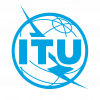BLOG
Telecom26 blog
Global SIMs - why IoT devices should be shipped with them

In a nutshell, eSIMs spell the end of the physical chip whilst iSIMs remove the need for any chip at all. Our team of IoT experts believe that iSIMs will be embraced by IoT device manufacturers as small sensors need to conserve space and reduce power consumption.
However, whatever type of SIM card is used in an IoT device - traditional physical SIM, eSIM, iSIM - IoT device manufacturers should be inserting themselves into the connectivity problem at the point of production.
This article by Speedcast based on a report by Cisco explains “Why IoT projects fail and what you can do to prevent it” and says:
“Today, a staggering 76 percent of IoT projects either stall at the proof-of-concept stage or fail to achieve their objectives” because of various reasons “including lack of collaboration between IT and the business side, lack of IoT expertise and a go-it-alone strategy that fails to build partnerships with other companies making up the complex ecosystem of IoT”.
Global Connectivity and IoT
Reliable connectivity is key to the success of most IoT projects. And yet far too often IoT device manufacturers leave the connectivity component to the end-user or agency that deploys their device - and may well end up blaming the device rather than poor connectivity for project failure.
However, when a manufacturer decides to take greater control over the connectivity of its IoT devices, it faces another challenge - it may not know where its device will end up and, even if it knows the country and can partner with a particular MNO the device’s connectivity is still at the mercy of one operator with unreliable bandwidth and patchy connectivity very real possibilities.
And again this will leave the owner of the IoT device left with the problem of juggling multiple SIMs across devices to find the strongest local network.
Telecom26’s Global IoT SIM cards
At the heart of Telecom26’s IoT service are our global eSIMs and physical SIM cards. Just one of our SIMs in an IoT device:
- Provides access to all of the networks covered by our global roaming service. That’s 1100+ cellular networks belonging to 650+ mobile operators in 200+ countries.
- Removes the need to worry about the coverage of a single MNO, or the existence of roaming alliances. Our SIMs automatically select the best performing network in the area, cross-border, while providing enterprises with the freedom to change SIM profiles and services with ease.
- Can be customised with routing profiles built for each IoT device according to a customer’s needs and budget. For example, for organisations that are more price sensitive we can ensure that our Global SIM cards automatically connect to the cheapest service in the area.
In addition, Telecom26’s Global SIM cards:
Are programmable over the air
Over the Air (OTA) updates enable remote control of SIM profiles and it’s easy to add new profiles and adjust services on the fly.
Have secure, independent architecture based on Standards-based, 3GPP-compliant infrastructure, with Tier-1, carrier-grade performance
Use API access with a full management portal for business process integration and a comprehensive interface, for full control of IoT devices.
We support all current SIM form factors, including 2FF, 3FF and 4FF – that’s mini, micro and nano, as well as MFF2. In addition to classic SIMs, we also offer eSIM, which provides new levels of flexibility.
We take care of the full end-to-end lifecycle, from programming to reprogramming and all necessary updates.
In a nutshell, Telecom26 enables data connectivity, anywhere - so that your IoT SIM device can connect to the best available network, regardless of location.
You can read more about our IoT SIM service here.
And, if you’d like to find out how Telecom26 can help your organisation to embrace the benefits of IoT SIMs, IoT Networks, improve IoT connectivity and maximise IoT Security please contact us.
And if you’d like to discuss your maritime communications and Private Networks at Sea requirements please Get In Touch.
Our maritime connectivity team will be attending Posidonia, the international shipping exhibition in Greece from 6-10 June so please Get In Touch if you’re going too and would like to meet up.



